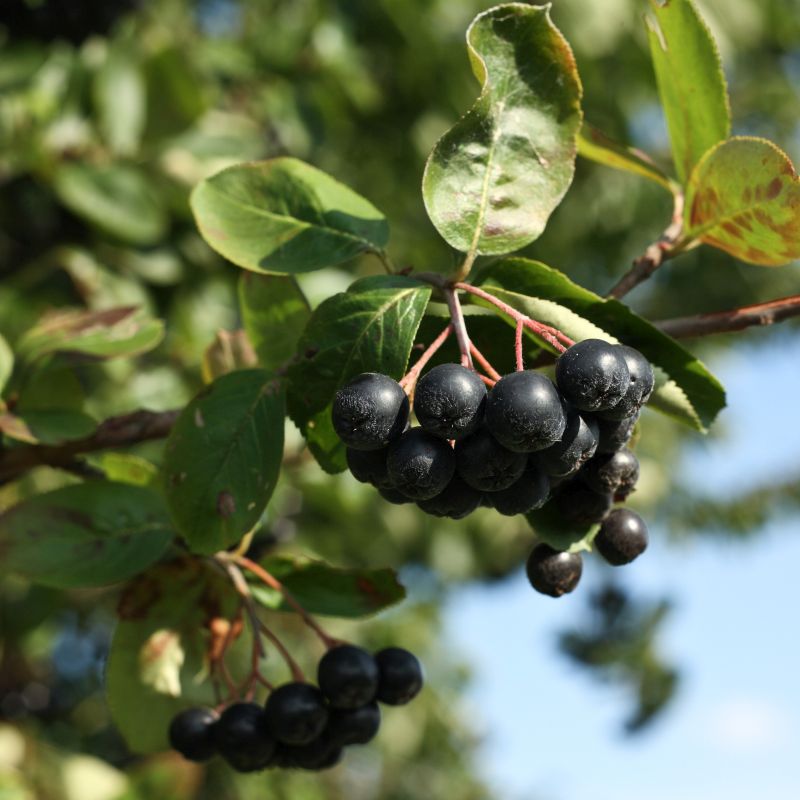
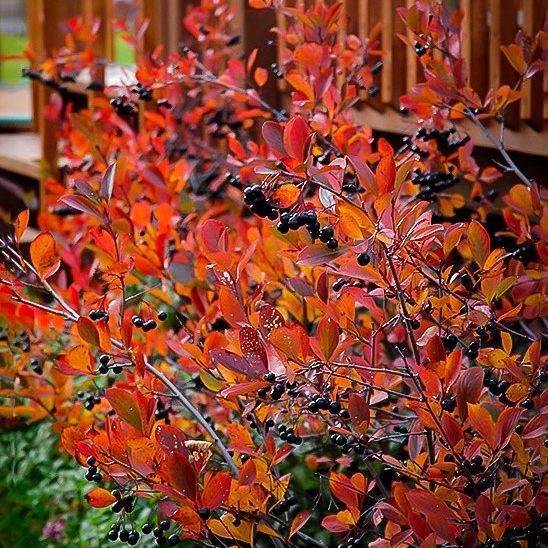
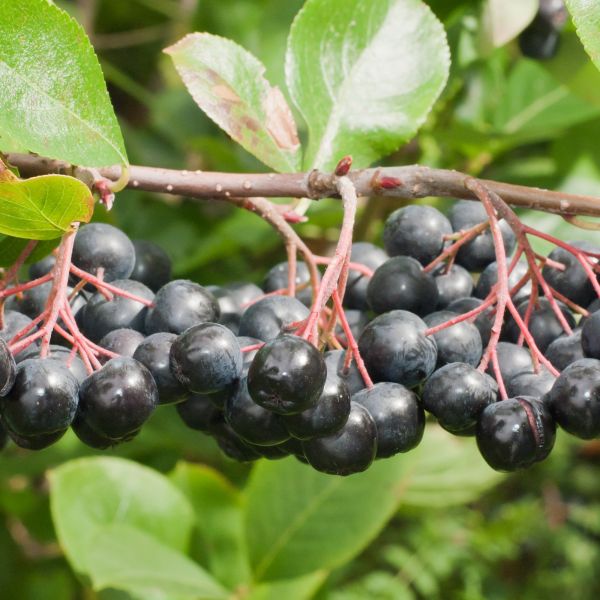
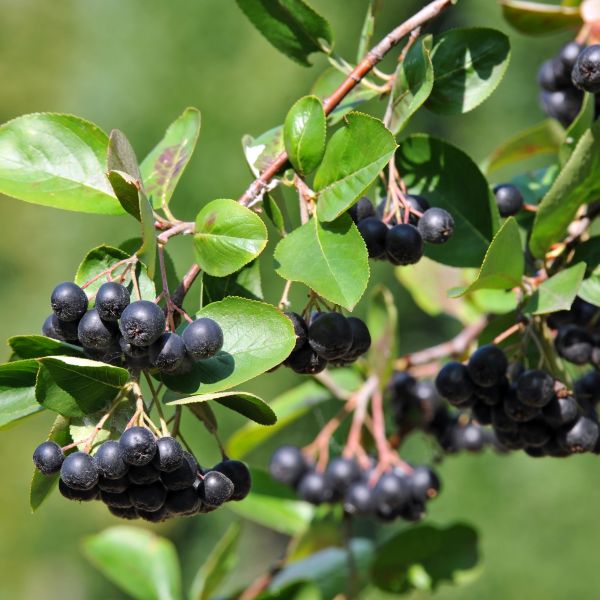
Black Chokeberry
Aronia melanocarpa var. elata
92 reviews
Black Chokeberry
Aronia melanocarpa var. elata
92 reviews
3.5 Gallon
We are sorry, product is currently out of stock due to seasonal availability. Please check the "Related plants available in your area" section below
Not just beautiful - intentionally selected by ShrubHub's 3D landscape design team to fit real-world spaces and maximize yard potential.
Why Black Chokeberry?
Black chokeberry, also known as Aronia melanocarpa var.elata, is a deciduous shrub that belongs to the Rosaceae family. It is native to North America and has been used for centuries for its medicinal properties. The berries of this shrub are high in antioxidants, vitamins, and minerals, making them a popular ingredient in dietary supplements and functional foods. Additionally, black chokeberry is also commonly grown as a landscaping plant due to its attractive features.
Sunlight
The Black Chokeberry typically requires full sun to partial shade, meaning it needs at least 6 hours of direct sunlight per day to thrive and grow well.
Watering
Black Chokeberry requires regular watering, especially during dry periods. It prefers moist soil and should be watered deeply, allowing the soil to dry slightly between waterings.
Fertilizing
The fertilizer requirement for Black Chokeberry typically involves a balanced formulation that is high in nitrogen content. It is recommended to use a slow-release fertilizer, applying it in early spring or late fall, avoiding excessive amounts to prevent
Enjoy The Autumn Magic With Black Chokeberry Shrub
If you're looking for a versatile and beautiful plant that can add interest and nutrition to your landscape, look no further than the Black Chokeberry. This stunning deciduous shrub is sure to impress with its showy white flowers, dark green foliage, and purplish black, edible berries.
Native to Eastern North America, the Black Chokeberry, Aronia melanocarpa, is more than just a pretty face – it also provides many benefits that make it a valuable addition to any landscape.
The adaptability of the Black Chokeberry is one of its main advantages. This plant can flourish in a wide range of soil types, including damp marshy soils, as well as weather conditions, making it a low-maintenance addition to your yard. It is also drought-tolerant, so you may appreciate its beauty even during the hottest summers.
But the Black Chokeberry is more than just a versatile plant with delicious ripe fruits. It is also a valuable source of nutrition, with its berries rich in antioxidants and other beneficial nutrients. Enjoy the health benefits of this unique plant by incorporating its berries into your diet or using them to make jams and other preserves.
Aside from its adaptability and nutritional advantages, the Black Chokeberry has significant environmental benefits. Its leaves absorb carbon dioxide and other pollutants from the air, aiding in air quality improvement and mitigating the consequences of climate change. Furthermore, its thick growth habit offers critical habitat for birds and other species.
But perhaps the greatest benefit of the Black Chokeberry is its ability to add interest and texture to your landscape. This plant is a unique and eye-catching addition to any garden or yard, with its showy white flowers and dark berries. Plant it as a specimen plant or use it to create a natural privacy screen.
In short, the Black Chokeb
Plant Information:
| Botanical Name: | Aronia melanocarpa var. elata |
| USDA Zones: | 3 - 8 |
| Water: | Moderate |
| Exposure: | Full Sun |
| Soil Needs: | Widely Adaptable |
| Mature Height: | 3 - 6 feet |
| Mature Spread: | 3 - 6 feet |

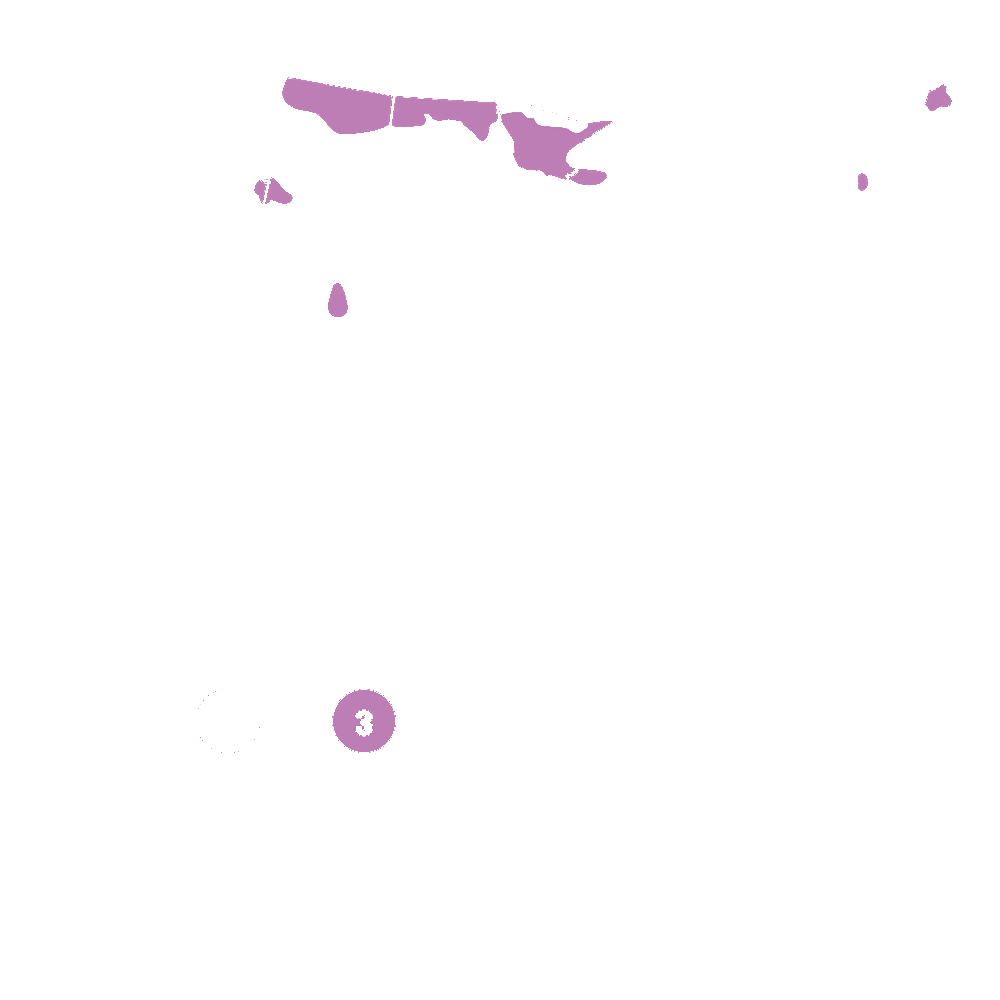





Pollination Info
Pollination Information for Black Chokeberry (Aronia melanocarpa var. elata)
Black chokeberry is a deciduous shrub that produces small, white or pinkish flowers in mid-spring. These flowers are hermaphroditic, which means that they have both male and female reproductive organs and can self-pollinate. However, cross-pollination between different plants is recommended to increase fruit production and quality.
Black chokeberry is primarily pollinated by bees, including honeybees, bumblebees, and other native bee species. These bees are attracted to the flowers by their sweet nectar and fragrant scent. They collect pollen from the stamens, which are the male reproductive organs, and transfer it to the stigma, which is the female reproductive organ, of other flowers.
Wind and other insects, such as butterflies and flies, may also play a minor role in pollinating black chokeberry flowers, but they are not as effective as bees.
It is important to note that black chokeberry is not self-fertile, meaning that it requires pollen from another plant in order to produce fruit. Therefore, it is recommended to plant at least two different cultivars of black chokeberry within close proximity to each other to ensure good cross-pollination and fruit set.
Overall, black chokeberry is a relatively easy plant to pollinate and maintain, and it can produce a bountiful crop of delicious and nutritious berries with proper care and attention.
FAQ
Black Chokeberry (Aronia melanocarpa var.elata) FAQs
What is Black Chokeberry?
Black Chokeberry, also known as Aronia melanocarpa var.elata, is a deciduous shrub that is native to eastern North America. It is a part of the Rosaceae family and produces small, dark purple fruits that are tart in flavor.
What are the benefits of Black Chokeberry?
Black Chokeberry is known for its high antioxidant content and is believed to have numerous health benefits, including reducing inflammation, improving heart health, and boosting the immune system.
How do I grow Black Chokeberry?
Black Chokeberry thrives in well-draining soil with a pH between 6.0 and 7.0, in full sun to partial shade. It is a hardy shrub that is tolerant of a range of soil types and can withstand drought once established. It is often propagated by division or from seeds, and should be pruned in late winter or early spring to encourage new growth.
When do Black Chokeberry fruits ripen?
Black Chokeberry fruits typically ripen in late summer or early fall and have a dark purple color. They are edible but tart in flavor, and are often used in jams, jellies, and baked goods.
How do I harvest Black Chokeberry fruits?
Black Chokeberry fruits can be harvested by hand once they ripen. They should be allowed to soften slightly before harvesting to ensure that they are fully ripe. The fruits can be stored in the refrigerator for several days or frozen for later use.
Are Black Chokeberry fruits poisonous?
No, Black Chokeberry fruits are not poisonous. However, they are highly astringent and may cause stomach upset if consumed in large quantities.
Is Black Chokeberry invasive?
No, Black Chokeberry is not considered an invasive species.
Planting & Care
Planting
Black chokeberry should be planted in early spring or fall, in a location that receives full sun to partial shade. The soil should be well-draining and moist, but not waterlogged. Dig a hole that is slightly larger than the plant's root ball and plant the shrub so that the top of the root ball is level with the soil surface. Water the plant thoroughly after planting.
Care
- Watering: Black chokeberry requires regular watering, especially during its first year of growth. The soil should be kept moist, but not waterlogged.
- Fertilizer: Fertilize the plant with a balanced fertilizer in early spring, just before new growth appears. Follow the package instructions for application rates.
- Pruning: Black chokeberry does not require regular pruning, but you can prune the plant to shape it or remove any dead or diseased branches. Prune in late winter or early spring, before new growth appears.
- Pests and Diseases: Black chokeberry is generally pest and disease resistant.
- Harvesting: The berries can be harvested in late summer or early fall, when they are fully ripe. They can be eaten fresh or used to make jams, jellies, or baked goods.
Check Out These Verified Customer Reviews:
Customer Reviews
4.7 out of 5 based on 92 reviews
Thank you! Your review has been submitted.
The black chokeberry looks fresh and vibrant. Great quality!
Smooth transaction from start to finish, will definitely be buying from them again.
I am very happy with my purchase of Black Chokeberry. The bush looks great in my garden and the shipment was fast. Customer service was helpful when I had a question.
Item has been added to your cart.


